 |
 |
 |
| |
Risk Score Predicts Diabetes Better Than HOMA-IR and Other Equations
"Comparing a risk score against physiological markers for predicting diabetes incidence in HIV+ individuals"
|
| |
| |
17th European AIDS Conference, November 6-9, 2019, Basel
Mark Mascolini
FINRISC, an easily calculated diabetes risk score, predicted diabetes onset more accurately than physiological equations like HOMA-IR in a study of 4907 US women and men with or without HIV infection [1]. But all tested diabetes predictors performed worse in people with versus without HIV.
Researchers at Emory University and other centers noted that people with HIV have 2 to 4 times higher rates of diabetes than HIV-negative individuals. In addition to frequent traditional risk factors (increasing age, minority race, obesity), people with HIV may have HIV-specific risk factors (chronic inflammation, immunosuppression, lipodystrophy, HCV infection). This study aimed to compare the performance of FINRISC, a 5-component diabetes risk score, with physiological equations including HOMA-IR, HOMA-beta, and triglyceride/HDL cholesterol ratio (TG/HDL) to predict diabetes onset by HIV status.
This retrospective analysis involved HIV-positive and negative women in the Women's Interagency HIV Study (WIHS) and positive or negative men in the Multicenter AIDS Cohort Study (MACS). From each cohort, researchers selected people who did not already have diabetes. Then they calculated baseline FINRISC score, HOMA-IR, HOMA-beta, and TG/HDL. The investigators compared each model's discrimination and calibration for predicting 10-year diabetes risk based on medication use.
FINRISC score = age + body mass index + waist circumference + elevated fasting blood glucose + use of blood pressure medication
HOMA-IR = fasting insulin x fasting glucose + 22.5
HOMA-beta = 20 x fasting insulin / fasting glucose - 3.5
TG/HDL = triglycerides/high-density lipoprotein cholesterol
The analysis included 1812 women with HIV, 596 women without HIV, 1285 men with HIV, and 1214 men without HIV. Proportions of blacks in those four groups were 64%, 68%, 30%, and 20%, while median ages were 41.7, 38.6, 41.8, and 46.3 and median body mass index 27.6, 28.9, 24.7, and 25.5 kg/m2. About one third of all women had prediabetes, as did about one quarter of all men. Median CD4 counts across the four groups were 463, 967, 511, and 884. Just under half of women and men with HIV had an undetectable viral load.
Defining diabetes as a self-report of antidiabetes medication use by 10 years, the researchers charted diabetes incidence of 11% in HIV-positive women, 12% in HIV-negative women, 10% in HIV-positive men, and 9% in HIV-negative men.
To determine the predictive capacity of each of the four equations, the researchers calculated the C statistic (sometimes called the concordance statistic) and hazard ratios. Ranging from 0.5 to 1.0, the C statistic indicates the "goodness of fit" for binary (yes/no) outcomes in a logistic regression model [2]. A C statistic of 0.5 means the model does no better than chance in predicting an outcome. A C statistic above 0.7 indicates a good model, a value above 0.8 indicates a strong model, and a value of 1 designates a perfectly predictive model.
For men C statistics were 0.68 for a positive FINRISC, 0.74 for a negative FINRISC, 0.70 for a positive HOMA-IR, 0.72 for a negative HOMA-IR, 0.57 for a positive HOMA-beta, 0.58 for a negative HOMA-beta, 0.62 for a positive TG/HDL, and 0.69 for a negative TG/HDL. These results meant FINRISC and HOMA-IR ranked as similarly good models in predicting diabetes, while HOMA-beta and TG/HDL underperformed in predicting diabetes.
For women the C statistic indicated FINRISC modestly outperformed HOMA-IR, outperformed TG/HDL a bit more, and greatly outperformed HOMA-beta.
Relative hazards indicated substantially greater predictive ability with FINRISC than with the other three models, with similar results for men and women. For men the relative hazard was 1.18 for a positive FINRISC, 1.22 for a negative FINRISC, 1.05 for a positive HOMA-IR, 1.15 for a negative HOMA-IR, 1.02 for a positive HOMA-beta, 1.01 for a negative HOMA-beta, 1.03 for a positive TG/HDL, and 1.05 for a negative TG/HDL. For women respective relative hazards were 1.22, 1.26, 1.03, 1.09, 1.00, 1.02, 1.02, and 1.16.
The researchers concluded that "FINRISC has superior discrimination and calibration than physiologic equations" (all the other equations tested). HOMA-IR proved the second-best model, while HOMA-beta and TG/HDL were "inconsistent and suboptimal." All models performed worse in HIV-positive WIHS women and MACS men than in their HIV-negative counterparts. The investigators suggested FINRISC "may need modifications to improve performance" in people with HIV.
References
1. Galaviz K, Schneider MF, Tien PC, Ali MK, Althoff K, Brown T. Comparing a risk score against physiological markers for predicting diabetes incidence in HIV+ individuals. 17th European AIDS Conference, November 6-9, 2019, Basel. Abstract PS4/6.
2. Statistics How To. C-statistic: definition, examples, weighting and significance. https://www.statisticshowto.datasciencecentral.com/c-statistic/
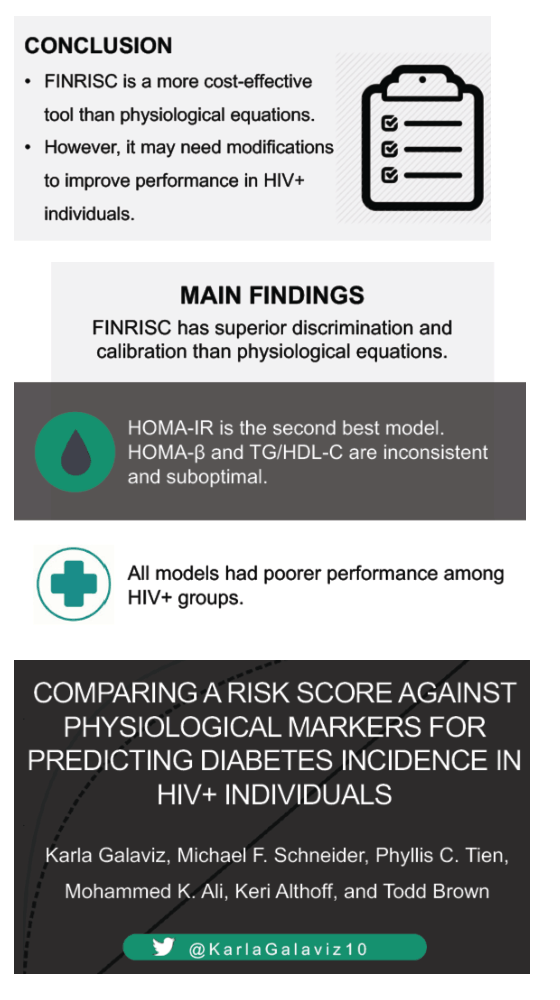
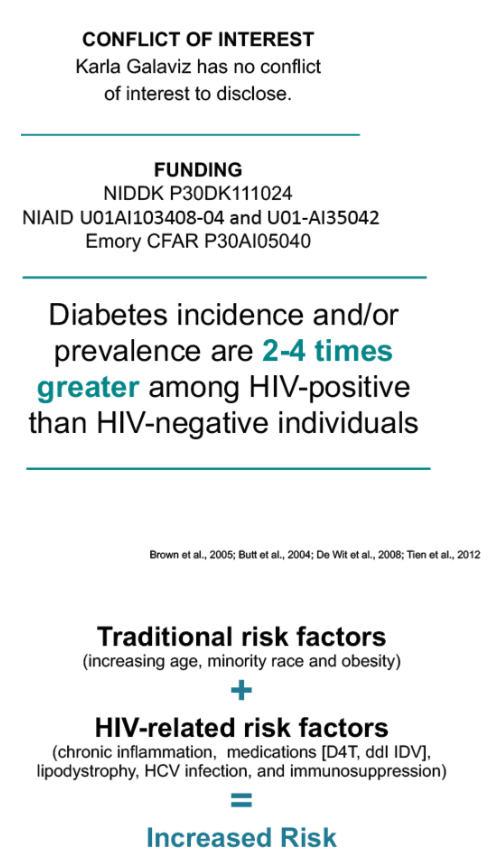
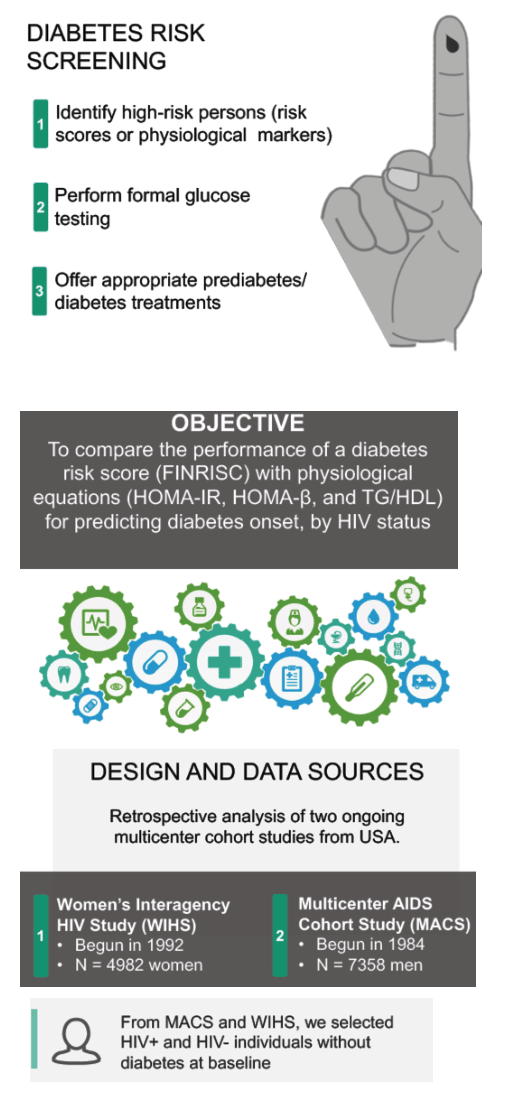
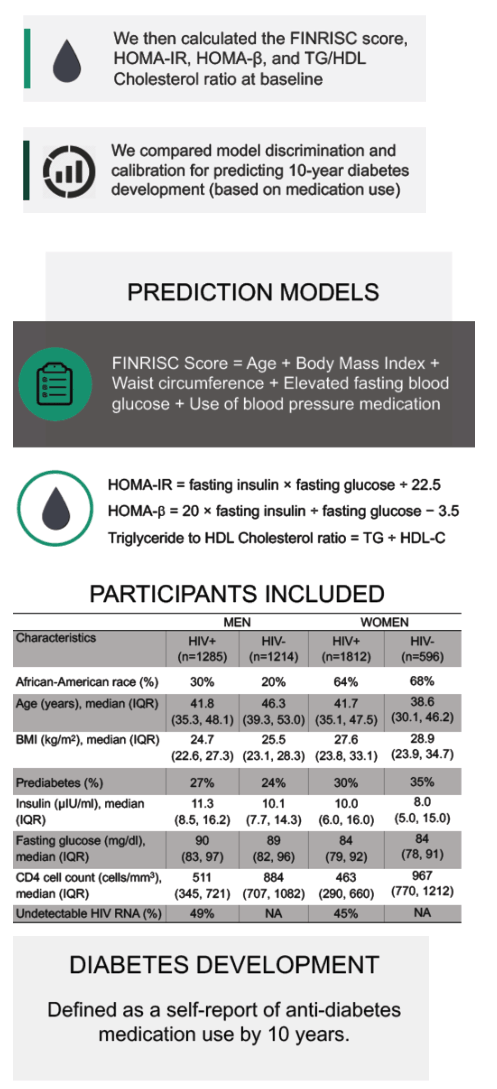
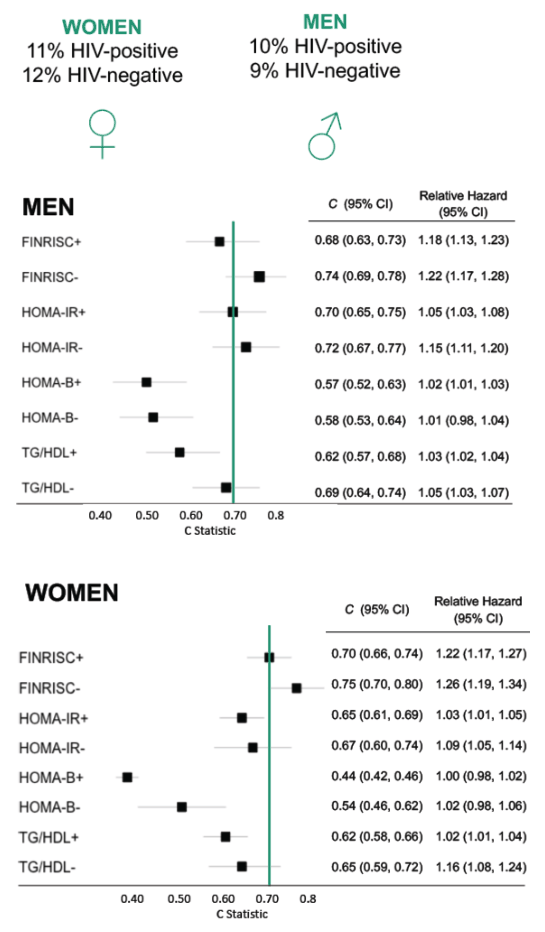
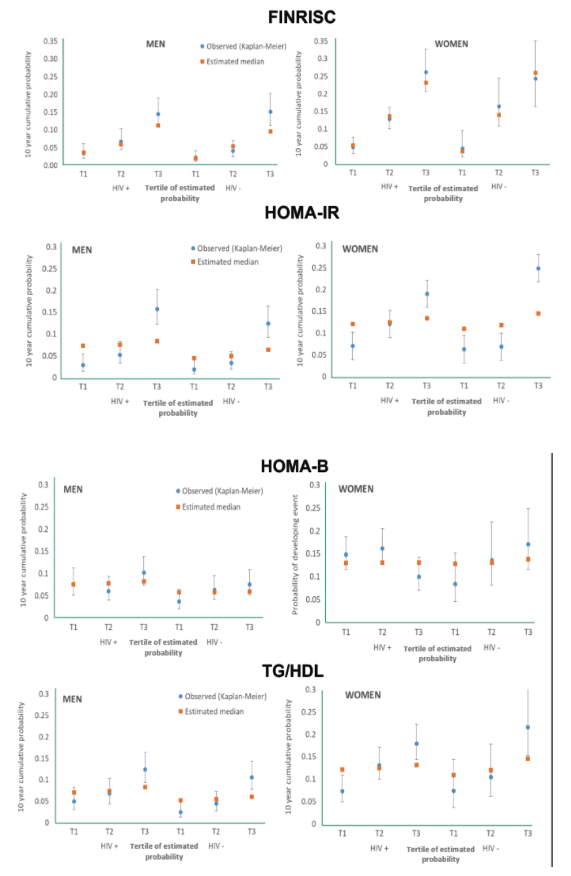
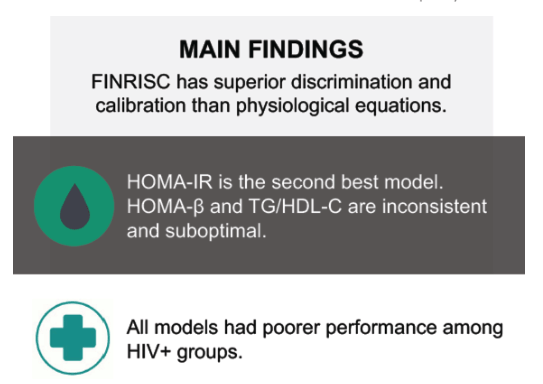
|
| |
|
 |
 |
|
|